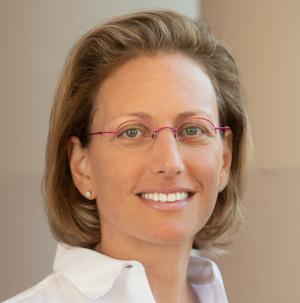
Research Topics
Our hearing depends on highly specialized mechanosensitive sensory cells named hair cells (HCs). The progressive loss of HCs is either the cause or the final common pathway of most forms of age-related hearing loss (ARHL), with outer hair cells (OHCs) being particularly sensitive. Attempts to induce cochlear HC fates from stem cells, in an effort towards regenerative therapy for hearing loss, result primarily in the production of immature HC-like cells more like vestibular HCs. Thus, the current toolkit for directing progenitor cells towards mature and functional HC fates is limited. For these reasons, the first focus area of my laboratory is the study of the molecular pathways that direct hair cell differentiation and survival. To this end, we develop and apply a variety of methods for cell-type-specific multi-omic analysis of the developing and mature inner ear, and couple them with advanced bioinformatic analyses. We validate our discoveries using functional studies in model systems and share identified genes and pathways with our human genetics collaborators.
Similarly, it is equally important to prevent hearing loss, and in particular, age-related and noise-induced hearing loss (NIHL). Through molecular studies of NIHL, we recently identified critical sexual dimorphisms in the response to noise and its treatments. For this reason, the second focus area of my work is sex differences in hearing and the cell type-specific molecular basis of acquired hearing loss. We currently focus on the role and mechanism of estrogenic signaling on the protection of the ear from sound over-exposure.
The third focus area of my research is the development of innovative tools for sharing, visualization, and analysis of multi-omic data. Here I lead an interdisciplinary team to make multi-omic data generated by individuals and consortia available in a meaningful way to both bench scientists and bioinformaticians.
Finally, I have a strong interest in mentorship, and my team consists of individuals with diverse backgrounds and expertise.
Biography
Dr. Hertzano is an otolaryngologist surgeon-scientist. Her clinical practice focuses on the diagnosis and treatment of diseases of the ear, with a specific emphasis on hearing restoration. Toward hearing restoration, Dr. Hertzano works to unravel the regulatory signaling cascades that lead to the proper development of the ear, and specifically the hair cells. A second main interest is in developing therapeutics to prevent age-related and noise-induced hearing loss. To accomplish these goals, her team uses cutting-edge functional genomics approaches coupled with validation using model systems. To facilitate dissemination, sharing, and analysis of multi-omic data Dr. Hertzano developed the gEAR portal - gene Expression Analysis Resource. Finally, Dr. Hertzano has a strong interest in mentorship.
Dr. Hertzano received an M.D. and Ph.D. from Sackler School of Medicine at Tel Aviv University, Israel. Her doctoral thesis, which was performed both at Tel Aviv University and NIDCD, focused on elucidating the signaling pathway downstream of the deafness-causing gene POU4F3 in the mouse inner ear. She then performed her residency training in otolaryngology-head and neck surgery and a fellowship in otology and neurotology at the University of Maryland School of Medicine (UMSOM). Dr. Hertzano worked as a full tenured professor at the UMSOM until 2022.
Dr. Hertzano is the recipient of several awards, including the Burt Evans Young Investigator Award from the National Organization of Hearing Research; the Brian E. Emery, M.D., Outstanding Teaching Award, UMSOM; the Distinction Award in Alternative/Basic Science for the Triological Society Thesis; and the 2021 UMB Researcher of the Year Award. She is a member of the American Society of Clinical Investigation.
Selected Publications
- Hawrylycz M, Martone ME, Ascoli GA, Bjaalie JG, Dong HW, Ghosh SS, Gillis J, Hertzano R, Haynor DR, Hof PR, Kim Y, Lein E, Liu Y, Miller JA, Mitra PP, Mukamel E, Ng L, Osumi-Sutherland D, Peng H, Ray PL, Sanchez R, Regev A, Ropelewski A, Scheuermann RH, Tan SZK, Thompson CL, Tickle T, Tilgner H, Varghese M, Wester B, White O, Zeng H, Aevermann B, Allemang D, Ament S, Athey TL, Baker C, Baker KS, Baker PM, Bandrowski A, Banerjee S, Bishwakarma P, Carr A, Chen M, Choudhury R, Cool J, Creasy H, D'Orazi F, Degatano K, Dichter B, Ding SL, Dolbeare T, Ecker JR, Fang R, Fillion-Robin JC, Fliss TP, Gee J, Gillespie T, Gouwens N, Zhang GQ, Halchenko YO, Harris NL, Herb BR, Hintiryan H, Hood G, Horvath S, Huo B, Jarecka D, Jiang S, Khajouei F, Kiernan EA, Kir H, Kruse L, Lee C, Lelieveldt B, Li Y, Liu H, Liu L, Markuhar A, Mathews J, Mathews KL, Mezias C, Miller MI, Mollenkopf T, Mufti S, Mungall CJ, Orvis J, Puchades MA, Qu L, Receveur JP, Ren B, Sjoquist N, Staats B, Tward D, van Velthoven CTJ, Wang Q, Xie F, Xu H, Yao Z, Yun Z, Zhang YR, Zheng WJ, Zingg B. A guide to the BRAIN Initiative Cell Census Network data ecosystem. PLoS Biol. 2023;21(6):e3002133.
- Chessum L, Matern MS, Kelly MC, Johnson SL, Ogawa Y, Milon B, McMurray M, Driver EC, Parker A, Song Y, Codner G, Esapa CT, Prescott J, Trent G, Wells S, Dragich AK, Frolenkov GI, Kelley MW, Marcotti W, Brown SDM, Elkon R, Bowl MR, Hertzano R. Helios is a key transcriptional regulator of outer hair cell maturation. Nature. 2018;563(7733):696-700.
Related Scientific Focus Areas



Molecular Biology and Biochemistry
View additional Principal Investigators in Molecular Biology and Biochemistry


This page was last updated on Thursday, September 7, 2023